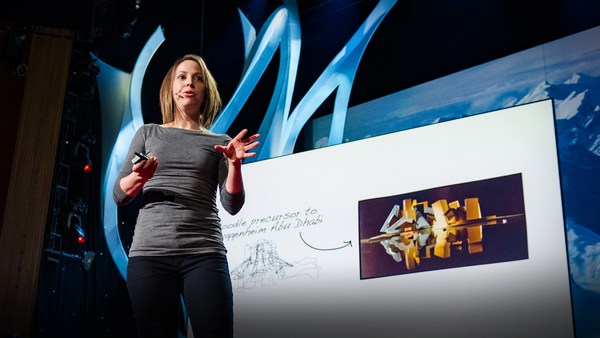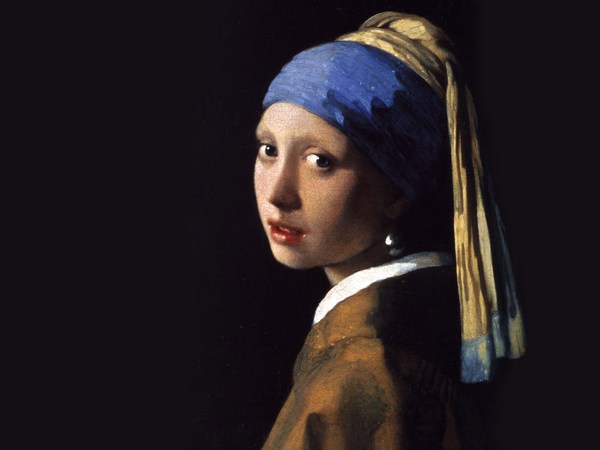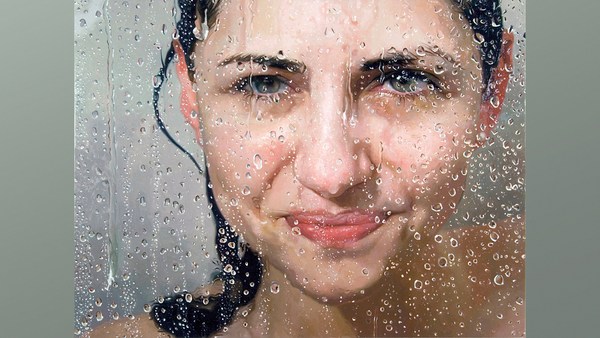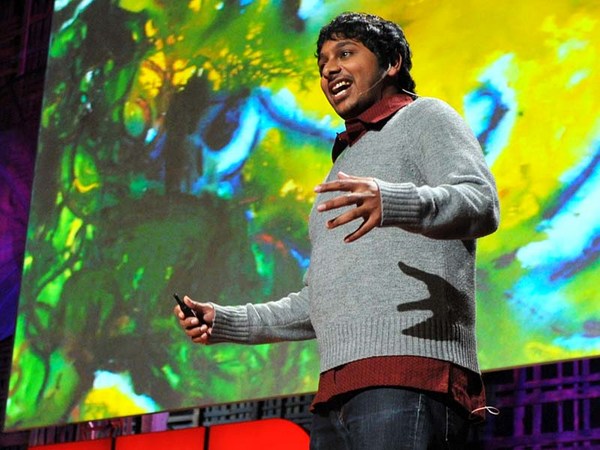You may want to take a closer look. There's more to this painting than meets the eye. And yes, it's an acrylic painting of a man, but I didn't paint it on canvas. I painted it directly on top of the man.
What I do in my art is I skip the canvas altogether, and if I want to paint your portrait, I'm painting it on you, physically on you. That also means you're probably going to end up with an earful of paint, because I need to paint your ear on your ear. Everything in this scene, the person, the clothes, chairs, wall, gets covered in a mask of paint that mimics what's directly below it, and in this way, I'm able to take a three-dimensional scene and make it look like a two-dimensional painting. I can photograph it from any angle, and it will still look 2D. There's no Photoshop here. This is just a photo of one of my three-dimensional paintings.
You might be wondering how I came up with this idea of turning people into paintings. But originally, this had nothing to do with either people or paint. It was about shadows. I was fascinated with the absence of light, and I wanted to find a way that I could give it materiality and pin it down before it changed. I came up with the idea of painting shadows. I loved that I could hide within this shadow my own painted version, and it would be almost invisible until the light changed, and all of a sudden my shadow would be brought to the light.
I wanted to think about what else I could put shadows on, and I thought of my friend Bernie. But I didn't just want to paint the shadows. I also wanted to paint the highlights and create a mapping on his body in greyscale. I had a very specific vision of what this would look like, and as I was painting him, I made sure to follow that very closely. But something kept on flickering before my eyes. I wasn't quite sure what I was looking at. And then when I took that moment to take a step back, magic. I had turned my friend into a painting. I couldn't have foreseen that when I wanted to paint a shadow, I would pull out this whole other dimension, that I would collapse it, that I would take a painting and make it my friend and then bring him back to a painting.
I was a little conflicted though, because I was so excited about what I'd found, but I was just about to graduate from college with a degree in political science, and I'd always had this dream of going to Washington, D.C., and sitting at a desk and working in government. (Laughter) Why did this have to get in the way of all that?
I made the tough decision of going home after graduation and not going up to Capitol Hill, but going down to my parents' basement and making it my job to learn how to paint. I had no idea where to begin. The last time I'd painted, I was 16 years old at summer camp, and I didn't want to teach myself how to paint by copying the old masters or stretching a canvas and practicing over and over again on that surface, because that's not what this project was about for me. It was about space and light.
My early canvases ended up being things that you wouldn't expect to be used as canvas, like fried food. It's nearly impossible to get paint to stick to the grease in an egg. (Laughter) Even harder was getting paint to stick to the acid in a grapefruit. It just would erase my brush strokes like invisible ink. I'd put something down, and instantly it would be gone.
And if I wanted to paint on people, well, I was a little bit embarrassed to bring people down into my studio and show them that I spent my days in a basement putting paint on toast. It just seemed like it made more sense to practice by painting on myself. One of my favorite models actually ended up being a retired old man who not only didn't mind sitting still and getting the paint in his ears, but he also didn't really have much embarrassment about being taken out into very public places for exhibition, like the Metro.
I was having so much fun with this process. I was teaching myself how to paint in all these different styles, and I wanted to see what else I could do with it. I came together with a collaborator, Sheila Vand, and we had the idea of creating paintings in a more unusual surface, and that was milk. We got a pool. We filled it with milk. We filled it with Sheila. And I began painting. And the images were always completely unexpected in the end, because I could have a very specific image about how it would turn out, I could paint it to match that, but the moment that Sheila laid back into the milk, everything would change. It was in constant flux, and we had to, rather than fight it, embrace it, see where the milk would take us and compensate to make it even better. Sometimes, when Sheila would lay down in the milk, it would wash all the paint off of her arms, and it might seem a little bit clumsy, but our solution would be, okay, hide your arms. And one time, she got so much milk in her hair that it just smeared all the paint off of her face. All right, well, hide your face. And we ended up with something far more elegant than we could have imagined, even though this is essentially the same solution that a frustrated kid uses when he can't draw hands, just hiding them in the pockets.
When we started out on the milk project, and when I started out, I couldn't have foreseen that I would go from pursuing my dream in politics and working at a desk to tripping over a shadow and then turning people into paintings and painting on people in a pool of milk. But then again, I guess it's also not unforeseeable that you can find the strange in the familiar, as long as you're willing to look beyond what's already been brought to light, that you can see what's below the surface, hiding in the shadows, and recognize that there can be more there than meets the eye.
Thank you.
(Applause)





